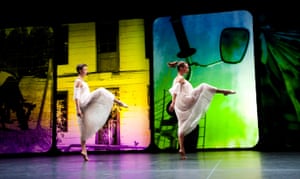I had witnessed Trisha Brown’s get the job done in a gallery space, and I beloved the sense of mischief in between the ladies performers. But the live performance that has imprinted on my memory was at the Whitney Museum in 1971. 3 of the pieces blew my mind: Walking on the Wall, so disorienting that it was nearly hallucinatory Slipping Duet I with Barbara Dilley, as recklessly chance-having as if they experienced been performing tricks on a superior wire and Skymap, in which we, the viewers, lay on our backs, hunting up and adhering to Trisha’s words on tape whilst we beamed our imaginations up to the ceiling.
In a haphazard way, I allow Trisha know I wished to dance with her. Two times I ran into her on the street and expressed my interest. No response. Then, waiting around in the checkout line at the grocery store I identified myself standing following to her. I was amazed that she knew my title. She requested me what I was doing these times. “I’m dancing with Sara Rudner and Kenneth King,” I replied, “but I’m likely to end shortly and just do my have perform.” Luckily, she overlooked my respond to and invited me to occur to a rehearsal in her loft. That was November 1975. I observed out later on that 1 of the factors she experienced requested me was that she understood I had analyzed with Elaine Summers, founder of “the wonderful ball work,” AKA kinetic recognition, and an ally of Trisha’s.
The beginning of my a few many years with Trisha overlapped with the end of her five many years with the improvisatory team Grand Union. When I came to the studio in November 1975, we to start with worked on building our possess movement to in shape into a really elaborate accumulating and deaccumulating scheme. That was Pyramid. Throughout the exact same period, she was creating the extended “Solo Olos” phrase that would go into the larger work Line Up (1976).

When Trisha instructed us to “line up,” I did not know what she meant. But I quickly caught on. She meant: What does a line necessarily mean to you – and to your body? She intended she likes to see straight lines, but she also likes messing them up. She intended she wanted to know what lines we could make among the walls and radiator and pipes and each other. Could it mean lining up our electrical power, could it mean getting swept up into a significant round run? Could a perimeter be a line? She required to see a array of interpretations.
We designed the primary section of Line Up by a approach of improvisation and remember. We would improvise on the instruction to “line up” for about 10 seconds, then we’d go back again and reconstruct what we thought we experienced just completed. Trisha would stage out and glimpse at various segments strung together – which was not simple simply because she was in the piece and all our conclusions were interdependent. Then she would hold the section, or fiddle with it, or rip it up. We gathered these bits about a year to make the fabric of an hour-long piece, into which Trisha inserted a range of organised “line dances” she experienced built prior to.
For the remaining model of Line Up, we experienced set our improvisation in choreography, if not in stone. It was not straightforward for the audience to decipher any pattern in the most important lining-up sections. Those people very long sections appeared as chaos in contrast to the quick, inserted line dances like “Sticks,” “Spanish Dance,” “Eights,” and “Scallops.” The line dances ended up easy on the eyes, creating a distinction with the considerably less orderly parts that we designed through improvisation. New York Situations critic Anna Kisselgoff complained that “[a] middle portion seems much too extensive and does not make crystal clear to the viewers what the dancers’ tasks are.” For us, it was about lines showing and disappearing, relationships forming and dissolving. As with Grand Union, what one of us chose to do impacted all of us.
In the generating method, we experienced to be tremendous-mindful of each and every other. When improvising and recalling our steps, we have been reconstructing memory, with the other women’s bodies as our signposts. We experienced to realise, once again and again, that the individual next to us remembered one thing various in time, room, and gesture. The declare, “Wait, you were on this aspect of me and your shoulder was here,” would be satisfied with, “No, my suitable shoulder was in line with Elizabeth’s ear.” Or, “I saw a hole from across the home and was building a line to bridge the hole.” That procedure of heading from wondering we remembered correctly to realising we experienced it skewed was captivating to Trisha. She desired to keep that rough-about-the-edges good quality alternatively of sprucing it to a sheen.
At a single stage, she created in a fleeting “surprise moment”. We would pause, and then just one of us would leap or flutter or spin or crumble, before we all moved on with the dance. Just anticipating that instant of guessing modifications your psychological makeup. Who will make the shock go? Will I be the one? Can I delight or confound my friends with a few, action-filled seconds?
Trisha took that unknowingness more. We attempted to actually create a new phase in front of the audience. Like Yvonne Rainer in Steady Undertaking-Altered Each day (1970), the group piece that eventually broke apart and turned the foundation for Grand Union, Trisha needed to expose the building process. That was aspect of the art for her. I now see that endeavor as a continuation of Grand Union’s observe of revealing method.

When I was watching the Tokyo movie from December 1975, the overlap among my starting up to dance with Trisha and her past functionality with Grand Union was introduced household to me. Towards the conclude of the effectiveness, Trisha stood up to perform “Solo Olos”, the quite movement phrase she was educating us again in New York. The intricate sequence is danced forward and backward – as a result the title.It was scarce for anyone in Grand Union to perform a established operate. In the early days, David Gordon ran as a result of all his permutations of Trio A, and Yvonne slipped pieces of her initially solo, 3 Satie Spoons (1961), into the blend at Oberlin College in 1972 when she was off to the side of the stage. But below was Trisha, accomplishing this latest transplant from her studio, centre-stage, as a soloist.
In the Tokyo video, soon after Trisha finishes “Solo Olos,” the other dancers taunt every other to execute a solo even though Trisha stretches out on the flooring downstage to watch. Steve Paxton delivers a extraordinary rendition of it, capturing the steady rhythm, the eccentric openings and closings, the brushing of the hand versus the flooring, the flat back again though decreasing the human body to the floor. When Barbara Dilley gets up to do a solo, she doesn’t try out to emulate “Solo Olos.” As a substitute, she lopes close to the space, then zeroes in on a much more rooted dance even though Steve tells a story about Barbara’s favorite birds. Expecting to be upcoming in line to dance a solo, David feels put on the location. He can take his feelings of insecurity — soon after all, he would be as opposed to Trisha, Steve, and Barbara – and transforms them into a grandiose act. He sings/wails a track of mock despair (“Do you know what it is li-i-i-k-e”), strutting and crouching like a rock star.
Watching this video of the Tokyo performance, I realised two things: first, that in a a lot more direct way than I experienced believed, I was joined to the tail conclusion of Grand Union, and second, that in some way Trisha experienced previously left Grand Union.
